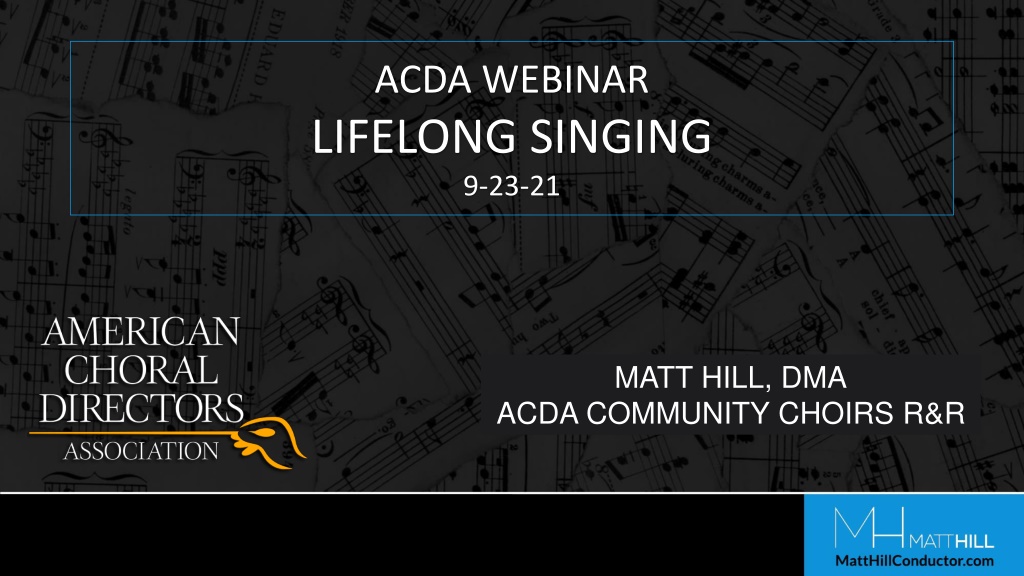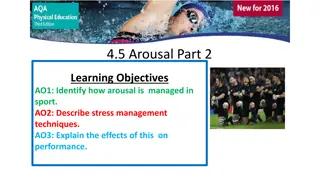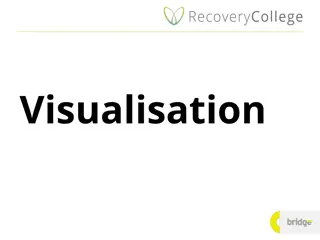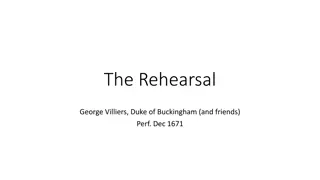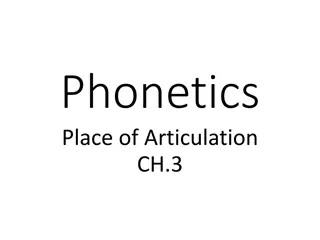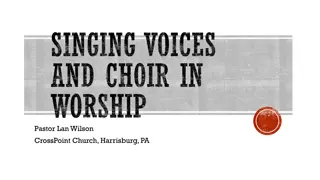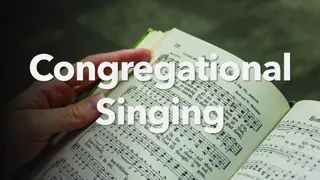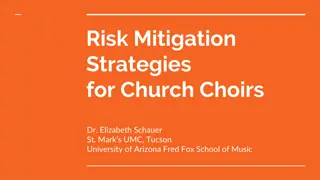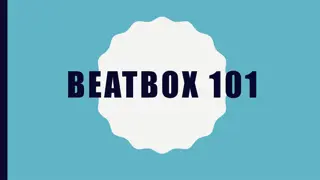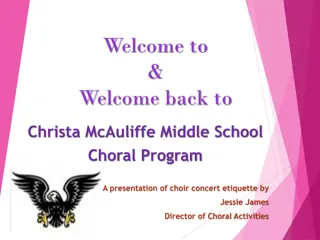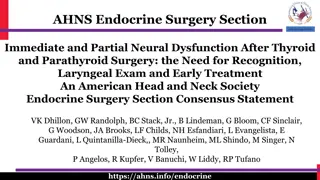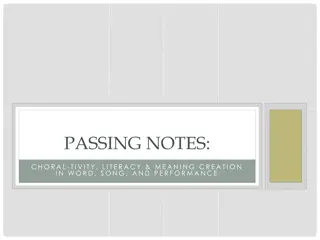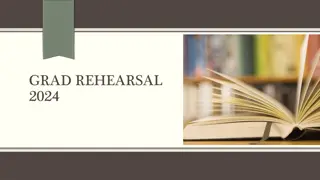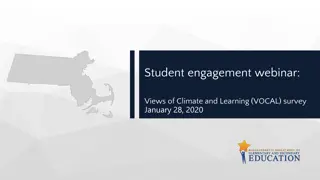Lifelong Singing - Choral Rehearsal and Vocal Techniques
This content covers choral rehearsal strategies as voice lessons, vowel modification techniques for different voice types, and utilizing roadmapping to improve choir performance dynamics. It emphasizes fundamental phonation concepts, navigating vocal ranges, and encouraging singers to modify vowels. The guide also suggests utilizing singers creatively in rehearsal, discussing tone color preferences, and incorporating effective warm-ups and repertoire lists.
Download Presentation

Please find below an Image/Link to download the presentation.
The content on the website is provided AS IS for your information and personal use only. It may not be sold, licensed, or shared on other websites without obtaining consent from the author.If you encounter any issues during the download, it is possible that the publisher has removed the file from their server.
You are allowed to download the files provided on this website for personal or commercial use, subject to the condition that they are used lawfully. All files are the property of their respective owners.
The content on the website is provided AS IS for your information and personal use only. It may not be sold, licensed, or shared on other websites without obtaining consent from the author.
E N D
Presentation Transcript
ACDA WEBINAR LIFELONG SINGING 9-23-21 MATT HILL, DMA ACDA COMMUNITY CHOIRS R&R
TOPICAL OVERVIEW We ve heard great ideas and information! Ideas/Topics I ll cover Choral rehearsal as corporate voice lesson Vowel modification in upper and lower extremes of range (different for biological males vs. biological females) Roadmapping (floating/covering other parts) CDPL as a programming resource AND the ability to TRANSPOSE Robert Shaw s choral warm-ups Repertoire list (available via Sundra)
CHORAL REHEARSAL AS CORPORATE VOICE LESSON Don t be afraid to teach fundamental phonation concepts Singers want to learn and perform repertoire, but they re generally happy to learn from your expertise in other areas as well Discuss in advance the tone color you prefer on each piece Vocalize through passaggio on neutral-vowel syllables to train them how to navigate Model for them, have individual singers/rows/sections model for each other Doesn t have to be a Vocal Pedagogy lecture to be impactful
VOWEL MODIFICATION I mix in [i] for bright modifications and [ ] or [ ] for dark modifications Female voices are brightest at the low extreme of the range and open/darken as they ascend Male voices are brightest at the low and high extremes, and darkest/most- open at about 2/3 of the way up (like a kite) I m always willing to sacrifice pronunciation in favor of beautiful/healthy tone It has taken some time to convince some of my church singers, but they make these modifications now without having to be asked.
ROADMAPPING Utilize singers as much as possible (when range/tessitura is appropriate) Sopranos sing the alto line instead of observing four bars of rest, for example Good for singers to extend ranges and experiment with timbre Remember to encourage modification to mix in Oh or Uh as they ascend Altos and tenors can float to each others parts if desired or necessary for balance (be aware that mixing tenors and altos creates a unique timbre) Tenors and Baritones can float to each others parts if desired or necessary for balance Make these decisions in advance and have singers mark their mapping in the first rehearsal on a piece
CHORAL PUBLIC DOMAIN LIBRARY - CPDL www.CPDL.org Free public domain scores (classics and modern) Searchable database (composer, title, voicing, etc.) Importantly for this conversation, MANY titles have Finale and/or Sibelius files associated with the links (NOTE: older files can be opened with newer versions of the software) These files allow for the scores to be modified, re-voiced, and/or transposed. I am comfortable in both programs and would be happy to assist if you have a score you d like transposed but lack the software. Email any time.
ROBERT SHAW WARM UPS FOR INDIVIDUAL & ENSEMBLE GROWTH www.robertshaw.website/speeches Visual examples, audio samples, and explanations of purpose
REPERTOIRE LIST In collaboration with a few other community/church choir directors, I ve begun to build a list of repertoire that meets the needs of aging voices through range, tessitura, accompaniment support, and/or some additional factors. That list will be published at ACDA.org when the video of this presentation is posted. I d love your input on additional titles to add, and will hope to build and maintain this list as a standing resource on the ACDA website.
FINAL THOUGHTS Singers of all ages and at all stages of development want similar things from their choral experiences: To be cared for To be believed in To be equipped with skills to improve To bring and derive value Your thoughtfulness and expertise make those things possible
THANK YOU It was a pleasure to be with you all. Find me on social media and follow, and I ll follow back Please be in touch if I can be of any assistance! Matt@MattHillConductor.com
